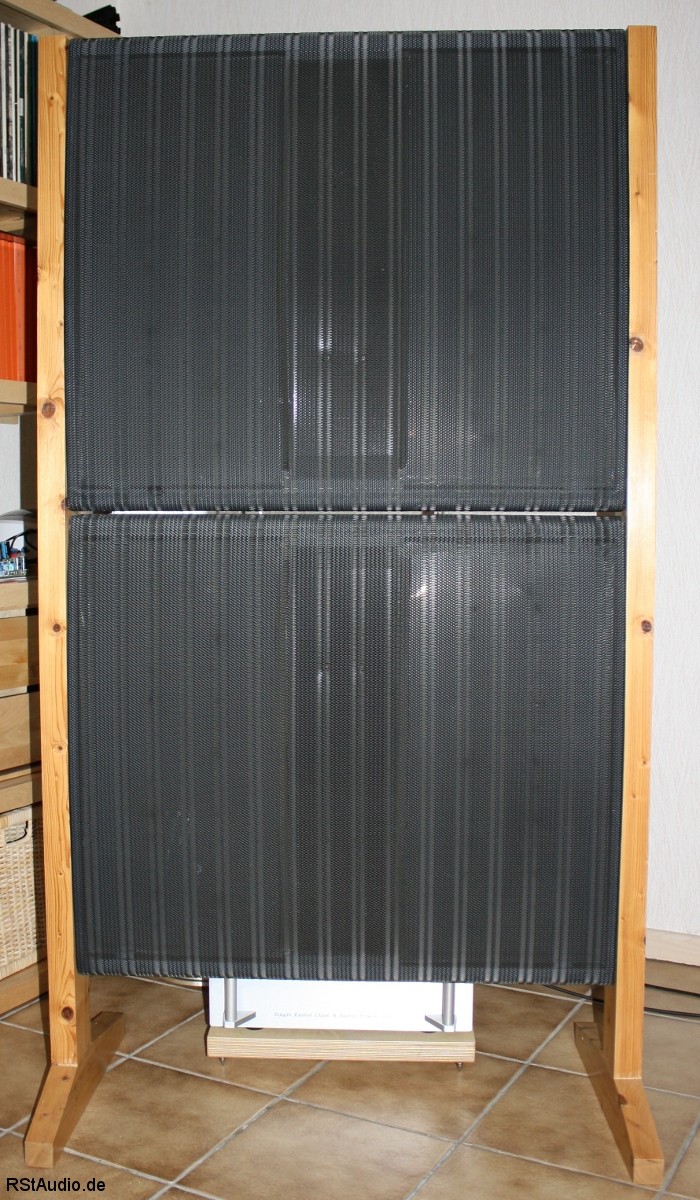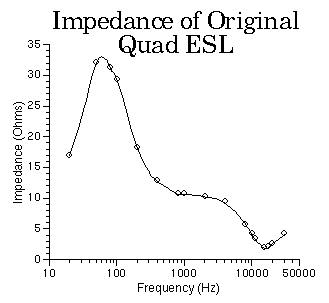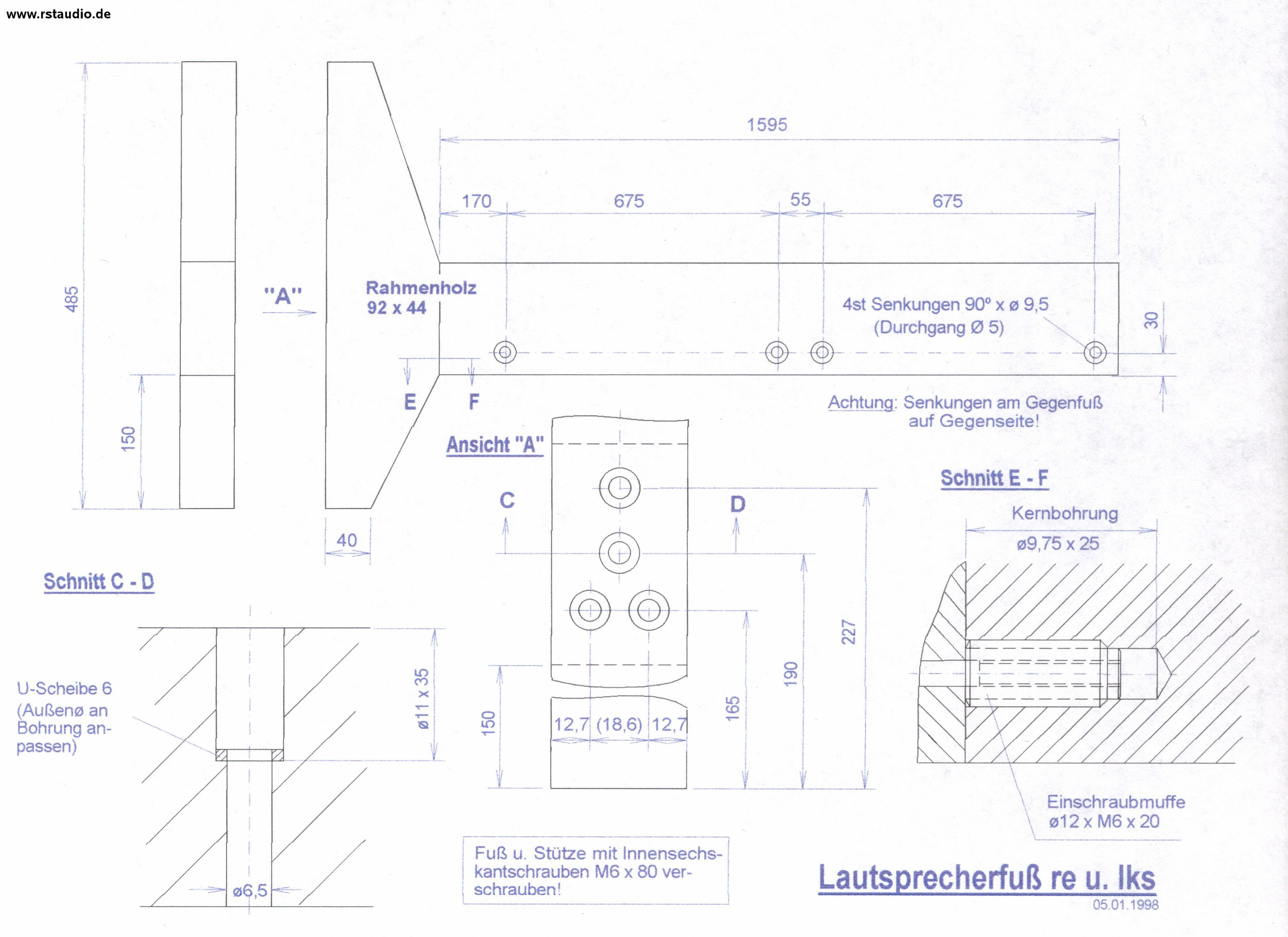
Table of Contents
Introduction
07-11-2021
Since the late 1970s I have owned Quad 57 electrostats in a stacked configuration. In all these years I have heard many wonderful speakers, but never has there been a design that could ultimately threaten my hotly beloved electrostats. When driven by the right power amps – and the XA30.8 is certainly one of them – these speakers are capable of amazing things.
Attached is a statement by Peter Walker on Stacked Quads that I borrowed from The Quad ESL homepage:
Another thing people like to do is to use two of our panels, one above the other. This is quite reasonable because it is really a strip source, you can extend the strip source without deteriorating anything. All you do is add 6dB at the bottom and 3 dB everywhere else. It gives you a louder sound, a more impressive sound. That’s all right. Adding woofers has never been very good. [Audio Amateur, 1978]
With the exception of the last sentence, I can only confirm these statements. The Quads do benefit from subwoofer support. In fact, it is extremely good for them not to have to transmit the frequency range below approx. 100Hz. My crossover frequency is currently at 125Hz.

For the correct design of the power amplifier, the following note can be found in the operating instructions of the Quad 57:
AMPLIFIER REQUIREMENTS:
Other amplifiers if they are properly regulated (not more than 33 peak volts with any load) are unlikely to cause damage to the loadspeaker, although they may not necessarily provide the correct performance because of the very strict stability requirements.
The maximum voltage per loudspeaker should therefore not exceed 33Vp. Each speaker is individually driven by one channel of an ES4. This gives the individual Quad an amplifier power of about 100W at 8Ω and the maximum voltage is about 44Vp. Looking at the impedance curve – see above – a power amplifier must be able to drive a load of about 2Ω at about 13kHz – very strict stability requirements. The XA30.5/.8 with its maximum output current of 20A is easily able to do this, it even drives two ESLs connected in parallel without any problems – this is how I operated the prototypes of this power amplifier at the beginning.
A good overview of the benefits of the stacked configuration can be found on the homepage The Quad ESL.
Frame Construction
07-11-2021
A Stacked Quad is two Quad 57 electrostats per channel (see above) arranged one above the other in a frame. The lower speaker is mounted upside down. The stands are self-built and based on various designs / projects from the internet.
The design and construction of these wonderful frames was done by my father.
Operation of the Stacked Quads
07-11-2021
As I wrote above, a Stacked Quad consists of 2 Quad ESL 57 per channel that are arranged in a frame on top of each other. The lower speaker is mounted upside down to achieve a uniform curvature of both speakers.
There are 3 different ways to operate the speakers:
1. One power amp channel with speakers in series
It is usually not a good idea to drive two speakers in series, the impedance is never really identical and so one speaker will be supplied with more power than the other. Despite this, it is one way to drive the Stacked Quad, especially as it means that the very low impedance at around 13kHz has little effect. With the ES1 I used the Stacked Quads exactly this way.
2. One power amp channel with speakers connected in parallel
This is the correct wiring when using one power amp channel. Now the two speakers get exactly the same signal and the tolerances in impedance do not have a significant effect. However, you have a particularly low impedance at about 13kHz, as the total impedance is half of the original impedance when two equal impedances are connected in parallel. A power amp that can handle that has to be able to drive very low impedances. That’s one of the reasons why I don’t really consider a tube power amp on the Stacked Quads.
3. One power amp channel per loudspeaker
This is, in my opinion, the silver bullet. I operate my Stacked Quads in exactly this way. I take one stereo power amplifier per channel with both inputs connected in parallel and then connect one loudspeaker to each power amplifier channel. However, you also need a power amplifier that can drive low impedances – the low impedance at approx. 13 kHz remains, but it does not have as strong an effect as under 2.
Over the years I have tried out many power amps on my Stacked Quads. There were also some very well-reputed tube power amps, but none could really convince me personally.
The power amplifiers from Quad – e.g. the 303 or the 405 – work without problems, but are not really the audiophile optimum. I can’t understand the hype around the 303, you give away so much of the performance of the speakers with these amplifiers.
From days gone by, I vividly remember the Mark Levinson ML2, which did the job beautifully. At that time, however, they were in unattainable regions in terms of budget. The Stacked Quad was operated at that time with one ML2 per channel, whether in variant 1 or 2 I can no longer say.
The first time I was really happy with a power amplifier on the Stacked Quads was with the Firstwatt Aleph J replicas. However, only in version 3. One channel of this power amplifier is somewhat overtaxed when 2 Quads are connected in parallel. This 25W single-ended Class A amplifier is certainly a Best Buy. Unfortunately, it is not a supersymmetrical bridge circuit. A correspondingly designed version of the Aleph J – i.e. an Aleph JX – would certainly be a further improvement.
Things got really good with the Pass Labs XA30.5/.8 which seems made for these speakers. It is capable of driving a parallel circuit. However, even with this power amplifier I prefer version 3 – already because of my very positive experiences with this option with the Aleph J. With these power amplifiers and the revised Stacked Quads, you are very far ahead!
